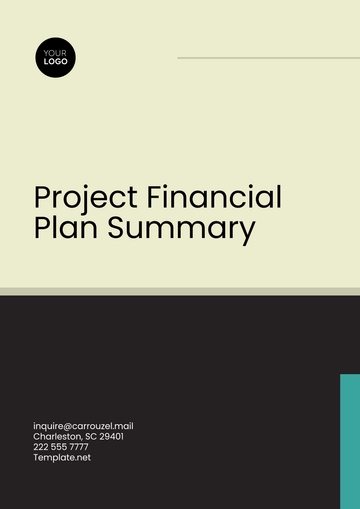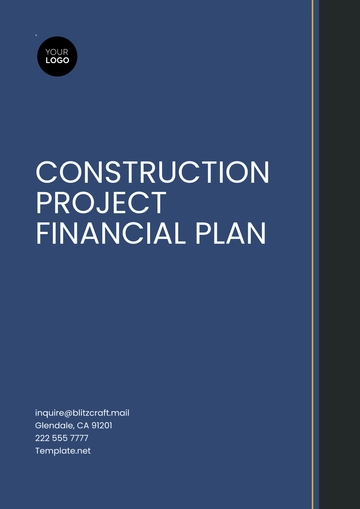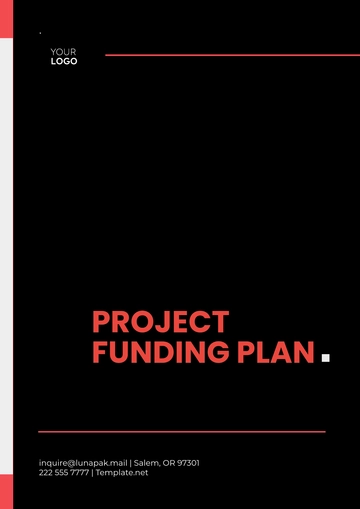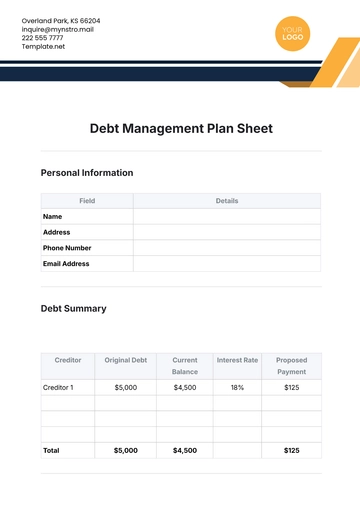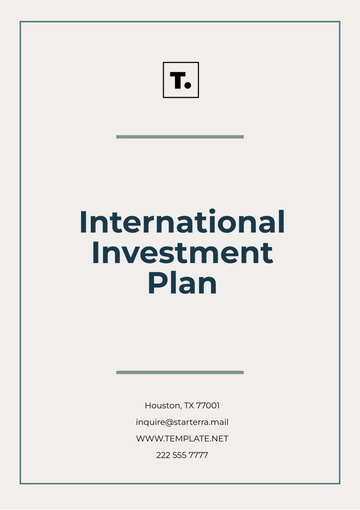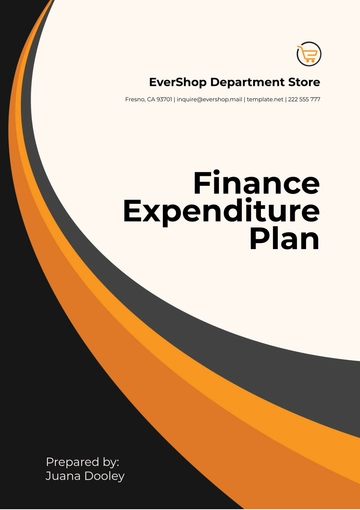Free Administration Financial Management Plan
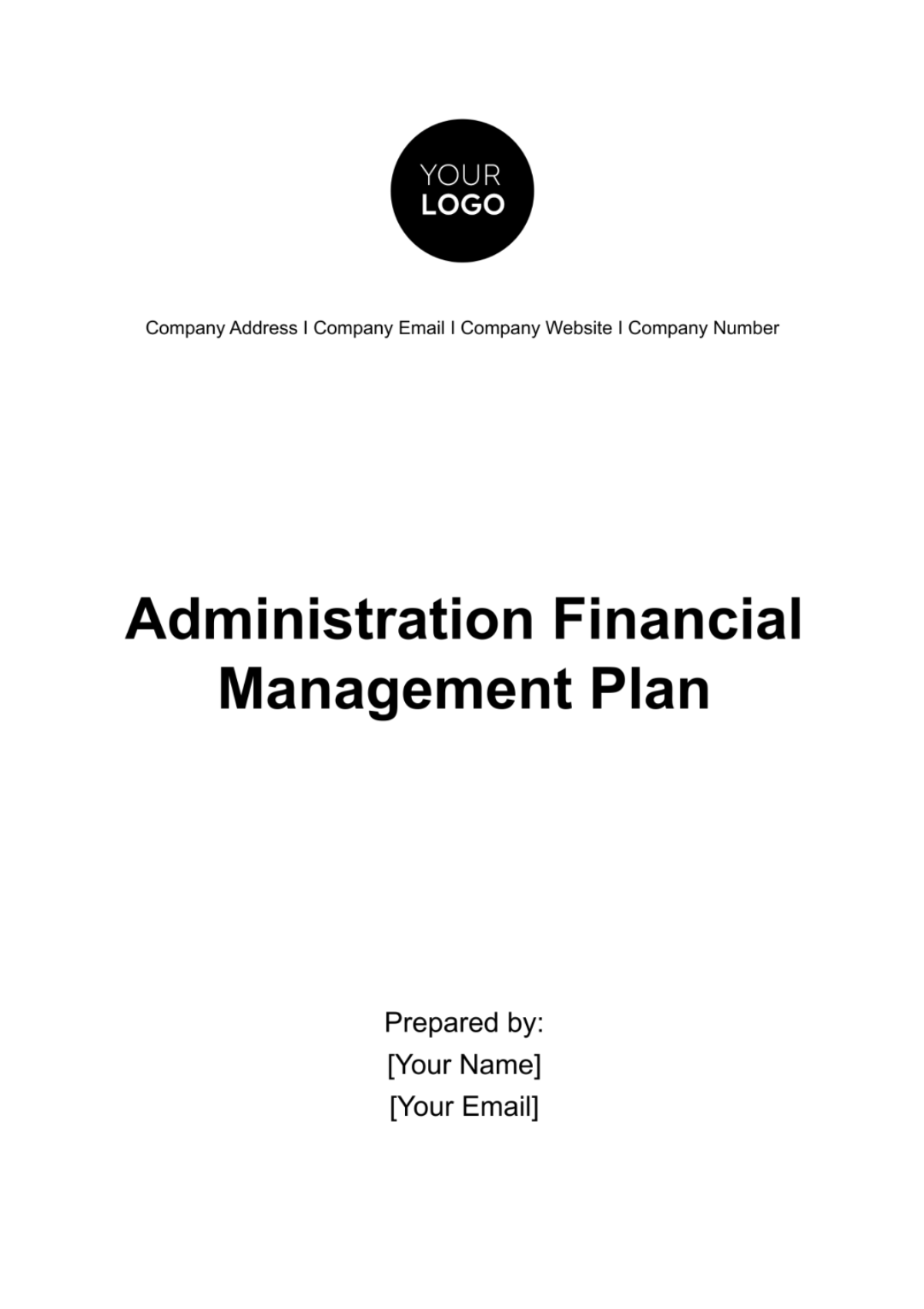
A. Executive Summary
[Your Company Name]'s Administration Financial Management Plan outlines our approach to effectively managing financial resources to support the company's objectives. In accordance with US laws and standards, this plan encompasses budgeting processes, revenue and expense management, cash flow strategies, financial reporting, risk mitigation, and compliance measures. By implementing robust financial practices, we aim to ensure transparency, accountability, and sustainability in our operations. This plan serves as a guide for stakeholders to understand our financial management strategies and the measures in place to achieve our goals.
B. Organizational Overview
At [Your Company Name], we are driven by a steadfast commitment to excellence in all facets of our operations. Our mission is to not only deliver high-quality products but also to cultivate a lasting and positive impact on the markets we serve. Through continuous innovation and customer-centric strategies, we strive to exceed expectations and set new standards of excellence.
Mission and Vision
Our mission is to deliver unparalleled value to our customers by providing innovative products that meet their needs and exceed their expectations. We envision a future where our brand is synonymous with quality, reliability, and innovation, leading to enduring customer satisfaction, strong brand loyalty, and sustainable growth.
Core Values
Integrity: We conduct business with honesty, transparency, and accountability, ensuring the highest ethical standards in all our interactions.
Diligence: We approach every task with dedication, perseverance, and attention to detail, striving for excellence in everything we do.
Innovation: We embrace creativity, curiosity, and adaptability, continually seeking new ways to improve and innovate to stay ahead in a rapidly evolving market landscape.
C. Financial Goals and Objectives
In line with our organizational mission and vision, [Your Company Name] has established clear financial goals and objectives to guide our strategic financial management. The following table outlines our key financial targets for the upcoming fiscal period, reflecting our commitment to financial sustainability, growth, and value creation.
The table below presents the financial goals and objectives set by [Your Company Name] for the upcoming fiscal period:
Objective | Target |
|---|---|
Revenue Targets | $5M |
Cost Reduction | 10% |
Profitability Increase | 15% |
Budget Utilization | 95% |
Cash Reserve Growth | 8% |
D. Budgeting Process
At [Your Company Name], our budgeting process is a strategic undertaking designed to align financial resources with organizational priorities and goals. Through a structured four-step approach, we ensure thorough analysis, effective allocation, and ongoing monitoring of budgets to support operational excellence and financial sustainability.
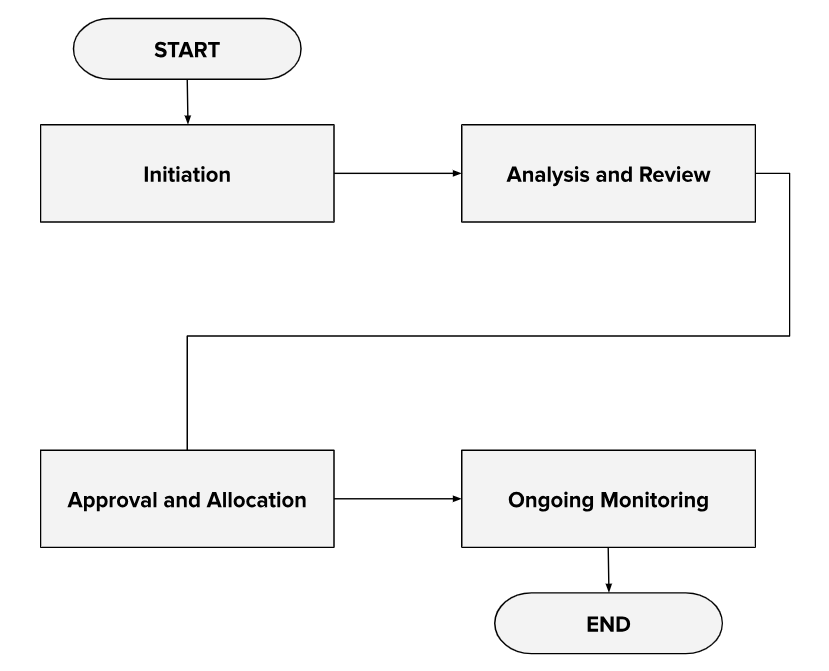
E. Revenue Management
In pursuit of financial sustainability and growth, [Your Company Name] implements dynamic revenue management strategies that encompass innovative approaches to sales scaling, revenue diversification, and pricing optimization. By leveraging targeted marketing campaigns, exploring new markets and products, and carefully managing pricing strategies, we aim to maximize revenue generation while ensuring alignment with customer expectations and market dynamics.
Sales Scaling through Targeted Marketing Campaigns
We employ data-driven marketing strategies to identify and engage with target audiences, leveraging channels such as digital advertising, social media marketing, and email campaigns to drive customer acquisition and retention.
Diversification of Revenue Streams
Exploring new markets and product offerings allows us to tap into additional revenue sources, mitigate risks associated with market fluctuations, and capitalize on emerging opportunities for growth and expansion.
Pricing Optimization
Our pricing strategies are designed to strike a balance between reflecting the value of our products and services and maintaining competitiveness within the market. Through thorough market analysis and customer feedback, we continuously refine our pricing models to optimize revenue and profitability.
F. Expense Management
At [Your Company Name], we prioritize strategic expense management to ensure financial efficiency and sustainability. Our approach encompasses stringent controls, proactive audits, and streamlined operational strategies to optimize resource utilization and minimize waste, thereby enhancing overall profitability and competitiveness.
Rigorous Approval Process for Major Expenses
Major expenditures undergo thorough scrutiny and approval processes, involving multiple stakeholders to ensure alignment with strategic objectives and budgetary constraints.
Regular Audits to Prevent Cost Leakages
Periodic audits are conducted to identify inefficiencies, discrepancies, and potential areas of cost leakage, enabling timely corrective actions and optimization of expense management processes.
Lean Operational Strategies
We adopt lean principles to streamline operations, eliminate unnecessary expenses, and enhance operational efficiency, thereby maximizing value delivery while minimizing costs.
Vendor Management and Negotiation
Efficient vendor management and negotiation practices enable us to secure favorable terms and pricing agreements, optimizing procurement costs without compromising quality or service levels.
Technology Adoption for Cost Efficiency
Investments in technology solutions and automation tools enable us to streamline processes, reduce manual effort, and achieve cost efficiencies across various operational functions.
G. Cash Flow Management
[Your Company Name] employs robust cash flow management strategies to maintain financial stability and support sustainable growth. By implementing conservative financial policies and proactive cash flow forecasting, we ensure optimal liquidity to meet operational needs and seize opportunities for expansion.
Optimum Cash Reserves
We maintain prudent cash reserves to buffer against unforeseen expenses and market fluctuations, adhering to conservative financial policies to safeguard financial stability.
Cash Flow Forecasting
Regular cash flow forecasting enables us to anticipate cash needs, identify potential gaps, and proactively manage inflows and outflows to maintain liquidity and support strategic initiatives.
Management of Receivables and Payables
Efficient management of receivables and payables ensures timely collection of revenues and payment of obligations, enhancing cash flow predictability and liquidity management.
H. Financial Reporting and Analysis
[Your Company Name] prioritizes comprehensive financial reporting and analysis to monitor performance, identify trends, and inform strategic decision-making. Through regular assessment of key performance indicators (KPIs) and variance analysis, we gain valuable insights into our financial health and operational efficiency, enabling us to optimize performance and achieve our financial objectives.
Steps in Financial Reporting and Analysis
Monthly Financial Reports: We generate detailed monthly financial reports to track revenue, expenses, and profitability, providing a comprehensive overview of our financial performance.
Key Performance Indicator (KPI) Monitoring: We closely monitor KPIs such as revenue growth, profitability ratio, and cost-per-revenue ratio to gauge performance against targets and industry benchmarks.
Variance Analysis: Utilizing variance analysis techniques, we compare actual financial results with budgeted targets, identifying deviations and investigating underlying causes to inform corrective actions.
Trend Analysis: We conduct trend analysis to identify patterns and emerging trends in financial data, facilitating proactive decision-making and strategic planning.
Performance Reviews and Action Planning: Based on the insights gained from financial reporting and analysis, we conduct regular performance reviews and develop action plans to address areas for improvement and capitalize on opportunities for growth.
I. Risk Management
[Your Company Name] is committed to proactively managing risks to safeguard our financial health and ensure resilience in the face of challenges. Through a comprehensive risk management framework, we systematically identify, assess, and mitigate potential risks, leveraging market analysis, internal audits, and operational assessments to strengthen our risk posture.
Systematic Risk Identification ↓ Risk Assessment and Prioritization ↓ Mitigation Strategies Implementation |
J. Compliance and Governance
At [Your Company Name], we prioritize adherence to strict standards of financial compliance and governance to uphold integrity, transparency, and accountability in all our operations. Through regular internal audits and comprehensive training programs, we ensure that our financial activities align with regulations and best practices, fostering a culture of compliance and promoting trust among stakeholders. By maintaining rigorous standards of governance, we aim to safeguard our reputation and build a foundation for sustainable growth and success.
- 100% Customizable, free editor
- Access 1 Million+ Templates, photo’s & graphics
- Download or share as a template
- Click and replace photos, graphics, text, backgrounds
- Resize, crop, AI write & more
- Access advanced editor
Optimize your organization's financial health with the Administration Financial Management Plan Template from Template.net. This essential tool is fully editable and customizable, making it perfect for crafting detailed financial strategies. Designed to support administrators in managing resources efficiently, it covers budgeting, forecasting, and financial control mechanisms. With the ability to edit directly in our Ai Editor Tool, you can tailor your financial plan to meet specific organizational goals, ensuring a robust framework for financial stability and growth.
You may also like
- Finance Plan
- Construction Plan
- Sales Plan
- Development Plan
- Career Plan
- Budget Plan
- HR Plan
- Education Plan
- Transition Plan
- Work Plan
- Training Plan
- Communication Plan
- Operation Plan
- Health And Safety Plan
- Strategy Plan
- Professional Development Plan
- Advertising Plan
- Risk Management Plan
- Restaurant Plan
- School Plan
- Nursing Home Patient Care Plan
- Nursing Care Plan
- Plan Event
- Startup Plan
- Social Media Plan
- Staffing Plan
- Annual Plan
- Content Plan
- Payment Plan
- Implementation Plan
- Hotel Plan
- Workout Plan
- Accounting Plan
- Campaign Plan
- Essay Plan
- 30 60 90 Day Plan
- Research Plan
- Recruitment Plan
- 90 Day Plan
- Quarterly Plan
- Emergency Plan
- 5 Year Plan
- Gym Plan
- Personal Plan
- IT and Software Plan
- Treatment Plan
- Real Estate Plan
- Law Firm Plan
- Healthcare Plan
- Improvement Plan
- Media Plan
- 5 Year Business Plan
- Learning Plan
- Marketing Campaign Plan
- Travel Agency Plan
- Cleaning Services Plan
- Interior Design Plan
- Performance Plan
- PR Plan
- Birth Plan
- Life Plan
- SEO Plan
- Disaster Recovery Plan
- Continuity Plan
- Launch Plan
- Legal Plan
- Behavior Plan
- Performance Improvement Plan
- Salon Plan
- Security Plan
- Security Management Plan
- Employee Development Plan
- Quality Plan
- Service Improvement Plan
- Growth Plan
- Incident Response Plan
- Basketball Plan
- Emergency Action Plan
- Product Launch Plan
- Spa Plan
- Employee Training Plan
- Data Analysis Plan
- Employee Action Plan
- Territory Plan
- Audit Plan
- Classroom Plan
- Activity Plan
- Parenting Plan
- Care Plan
- Project Execution Plan
- Exercise Plan
- Internship Plan
- Software Development Plan
- Continuous Improvement Plan
- Leave Plan
- 90 Day Sales Plan
- Advertising Agency Plan
- Employee Transition Plan
- Smart Action Plan
- Workplace Safety Plan
- Behavior Change Plan
- Contingency Plan
- Continuity of Operations Plan
- Health Plan
- Quality Control Plan
- Self Plan
- Sports Development Plan
- Change Management Plan
- Ecommerce Plan
- Personal Financial Plan
- Process Improvement Plan
- 30-60-90 Day Sales Plan
- Crisis Management Plan
- Engagement Plan
- Execution Plan
- Pandemic Plan
- Quality Assurance Plan
- Service Continuity Plan
- Agile Project Plan
- Fundraising Plan
- Job Transition Plan
- Asset Maintenance Plan
- Maintenance Plan
- Software Test Plan
- Staff Training and Development Plan
- 3 Year Plan
- Brand Activation Plan
- Release Plan
- Resource Plan
- Risk Mitigation Plan
- Teacher Plan
- 30 60 90 Day Plan for New Manager
- Food Safety Plan
- Food Truck Plan
- Hiring Plan
- Quality Management Plan
- Wellness Plan
- Behavior Intervention Plan
- Bonus Plan
- Investment Plan
- Maternity Leave Plan
- Pandemic Response Plan
- Succession Planning
- Coaching Plan
- Configuration Management Plan
- Remote Work Plan
- Self Care Plan
- Teaching Plan
- 100-Day Plan
- HACCP Plan
- Student Plan
- Sustainability Plan
- 30 60 90 Day Plan for Interview
- Access Plan
- Site Specific Safety Plan

